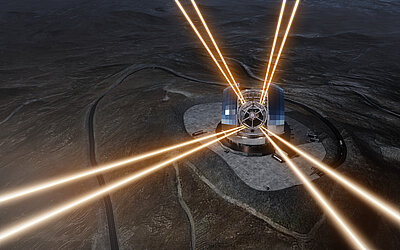The starlit sky has been fascinating humanity since the dawn of time. Observing distant galaxies, discovering new planetary systems and the idea of life outside our solar system does not only inspire our fantasy but also provides us with important insights for a better understanding of the universe.
Find out how high-precision drive technology from PI sharpens the view into space!
By building the hitherto largest terrestrial telescope, the Extremely Large Telescope (ELT), the European Southern Observatory (ESO) hopes to find out more on the origin and development of planetary systems, and therefore find some answers to questions on habitable planets or even life outside our solar system. It will be put into operation atop the 3,046-meter high Cerro Amazones in the Chilean Atacama desert during 2024.
What is the Meaning of "Extremely Large"?
The main reflector of the telescope will have a diameter of 39 m and a light collecting area of almost 1,000 m². The main reflector is to be made up of 798 individual hexagonal segments. Each of these segments will have a diameter of 1.40 meters and weigh 250 kg.
This means that the ELT will be the largest telescope for scientific evaluation of electromagnetic radiation in the visible and near-infrared wavelength range.
Where is the Technology from PI Being Used?
The giant main reflector collects the light from the night sky and reflects it to the smaller secondary mirror, from where it is routed over several adaptive optics in order to supply us with the sharpest possible images from space.
Any deviations from the optimum optical path caused by changes in the height of the telescope, thermal effects or the wind, are compensated immediately by continuous realignment of the 798 individual segments – this is done by the 2,394 actuators from PI!
To meet the high technical requirements of the project, PI developed a tailor-made actuator and controller concept.



